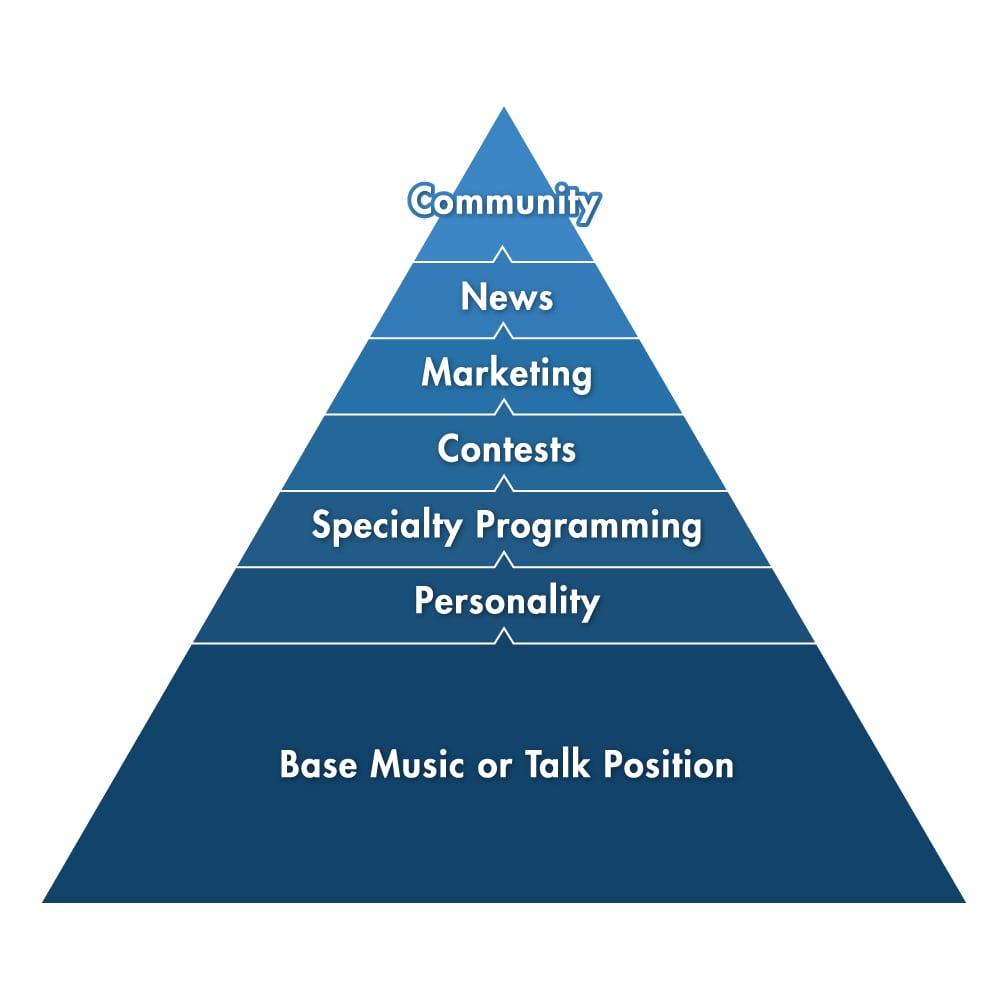All of the insights we provide to our radio clients are based on a concept we call the Image Pyramid, which states that a station’s ratings performance is largely based on the relatively simple images that listeners possess of that station. It has been our experience that the most successful radio stations have images that exist in a very specific hierarchy, with their base music, news or talk position being far and away the most important.
That is why the base music, news or talk position takes up nearly half of the Image Pyramid—its size indicates its importance in terms of where a station focuses its efforts—and its position at the bottom demonstrates how it supports all of the other product attributes. Quite simply, if a music station is not strongly imaged for the music it plays, efforts to build other product attributes are in vain.
Similarly, if a spoken word-formatted station does not have a strong base position—such as for being the News, Talk or Sports station—it should not be focusing on developing secondary attributes.
Many stations make the mistake of externally marketing their morning shows or contests or investing heavily in tactical marketing, such as direct mail and telemarketing, before their base positions are strong enough to support these additional images. Such practices prevent stations from maximizing their potential relative to their market’s appetite for the kind of programming they carry and often leave such stations vulnerable to direct competition.
Despite the emphasis we place on a station’s base position, we recognize that the most successful radio stations are perceived more “deeply” by listeners. Our experience points to personality—in most cases emanating from a station’s morning show—as being the most important secondary product attribute to develop, and thus personality takes its place as the second layer of the Image Pyramid.
Few stations enjoy the luxury of strong base music positions and big personality images. For those rare star performers, however, the Image Pyramid directs them to specialty programming, contesting, marketing, news and then community involvement as the next stages of product attribute development.


